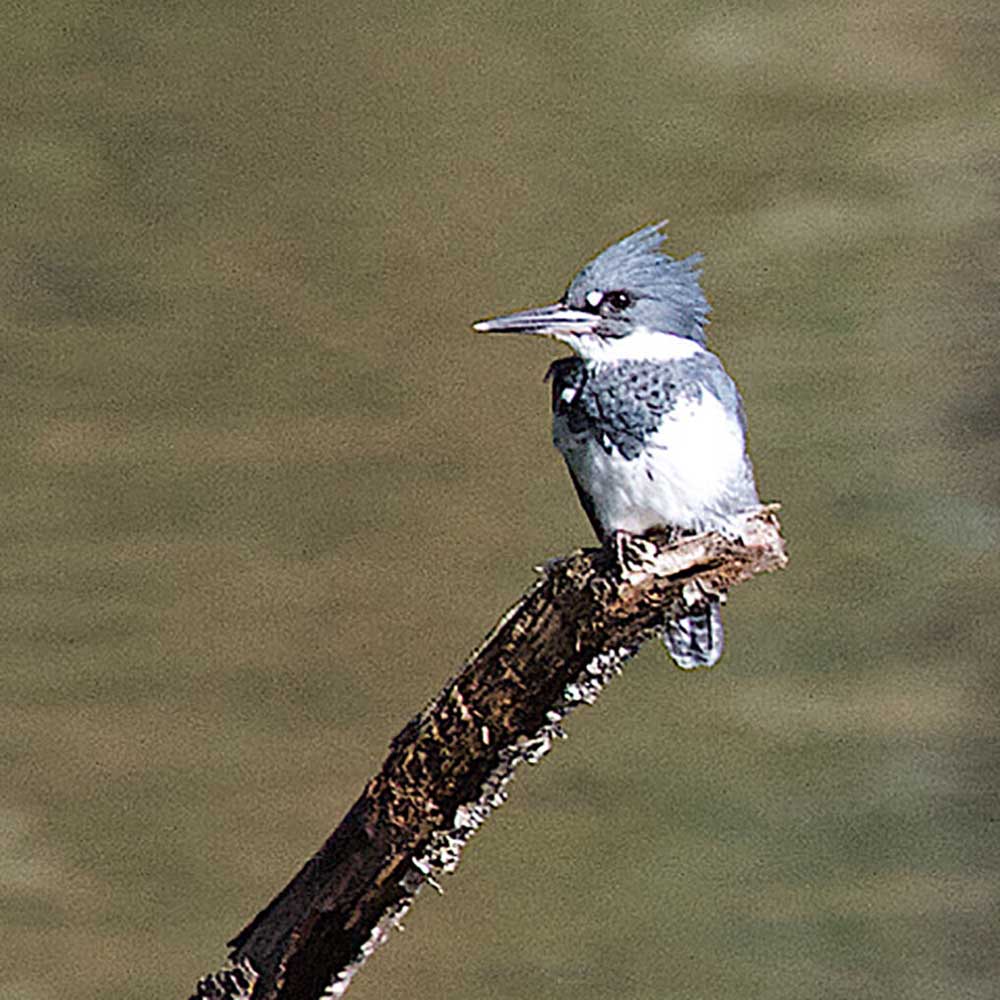Birding: All about belted kingfishers: A resident and migrant
Published 9:33 am Wednesday, April 27, 2022

- Kingfishers hunt from perches along the shoreline of open water.
Have you observed the belted kingfisher lately? Generally, we hear it before we see it. Its loud raucous rattle is a give-away to its presence. Its habitat is always near open water along rivers, streams, creeks, lakes and/or estuaries that provide perches for the bird to hunt from. These kinds of aquatic habitats are where you can expect to both hear and see the belted kingfisher. It is a common, permanent resident on the Long Beach Peninsula as well as in Pacific County. In addition, it nests and raises its family in our area.
Trending
The range map (Figure 1) shows its overall distribution. Most kingfishers don’t migrate, but some kingfishers will migrate from areas such as the northern part of its range if fishing grounds are not available all year round. They stay in areas where open water is available throughout each of the seasons. Those that migrate winter in Mexico, Central America and the northern parts of Venezuela and Columbia.
The belted kingfisher’s nest is a burrow usually in an earthen bank over water. It is a tunnel that ranges in length from one to eight feet and is generally located high on a riverbank or sand bank. Scientists think this may be their way to protect against flooding. They have been known to excavate tunnels in gravel pits or other banks of earth that may be away from water. Each of the Kingfisher pair usually help build the nest. The kingfisher has one or two broods between May and July and lays five to eight eggs each time. The eggs are incubated for 22-24 days, and the nestlings stay in the nest anywhere from 27-29 days.
The belted kingfisher is one of the few birds in North America in which the female is more colorful than the male. The female sports both a blue and a chestnut band and chestnut flanks, whereas the male only has a blue band. Both male and female have large heads with a shaggy double pointed crest, a long thick, straight, dagger like bill, and appear to be quite stocky in stature. They wear white collars and have a barred tail. Overall, they are a contrasting slate blue and white.
Trending
Their feeding behavior is interesting. Kingfishers sit on a perch scouting for fish which is their mainstay and favorite or other aquatic prey such as crayfish. Once spotted they plunge from their perch to snatch a fish that is lurking near the surface. If a perch is unavailable the kingfisher will hover in the air like a helicopter looking down as it hunts for a tasty meal. It will also pursue amphibians and reptiles.
If you notice a kingfisher that appears to be agitated, you will notice that its crest is elevated, and it may be heaving its body up and down. Nearby there may be one of its predators (hawks, snakes, and some mammals), lurking in the vicinity.
The best places to watch the belted kingfisher‘s antics on the peninsula is our harbors, especially Port of Peninsula in Nahcotta, Chinook and Ilwaco harbors. Here they perch on poles or even on the mast of a boat from which they search for fish swimming close to the surface of the water. Other spots include openings in the trees where a river, creek, or stream flows through to Willapa bay. Stop at these sites for a listen. The raucous rattle is unmistakable. Kingfishers fly fast and straight so look also for a slate-blue bird that whizzes by as if in a very big hurry. The key is to bird with your ears and your eyes. Your senses will help you locate the belted kingfisher and maybe the entry to its tunnel nest!









